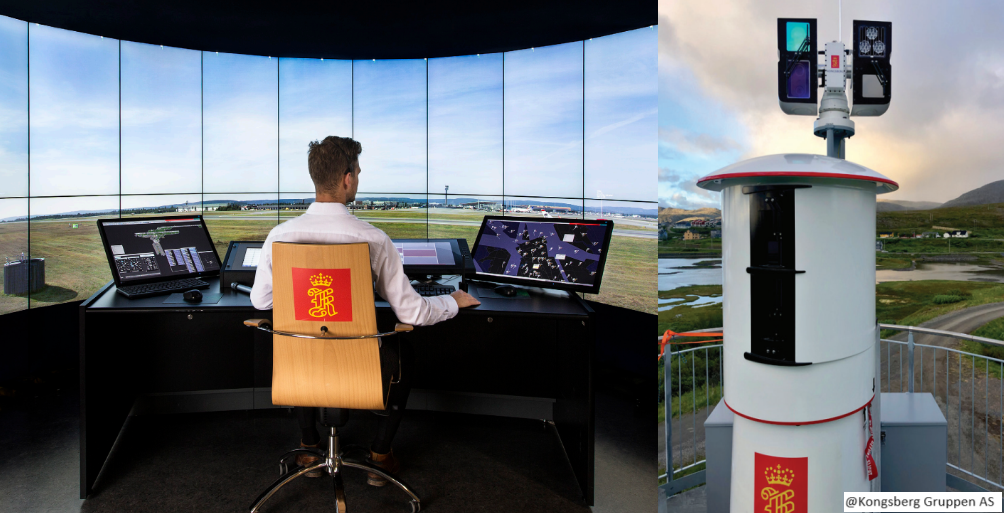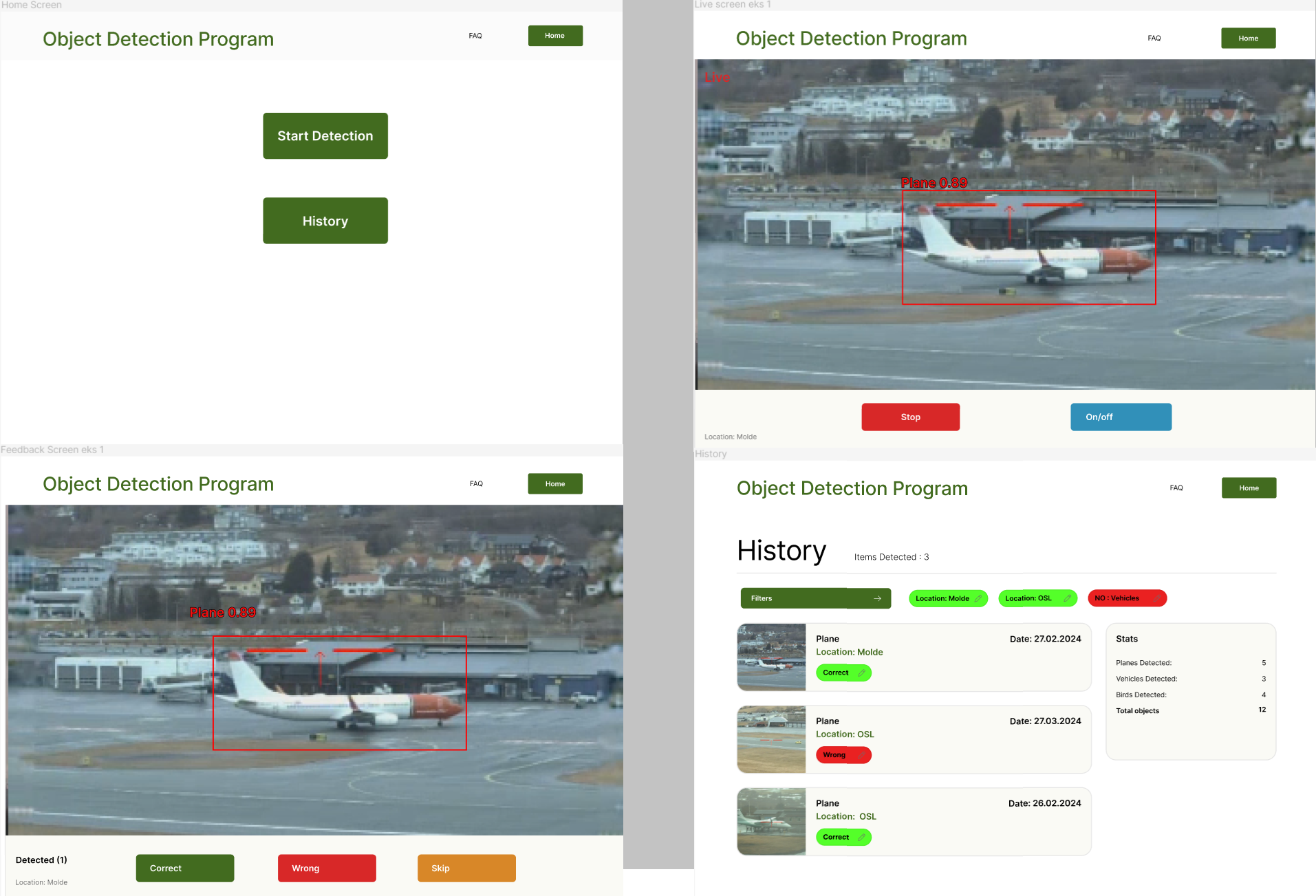Om prosjektet
At 11 airports in Norway, there are remote tower systems installed with a 360 camera and a PTZ camera with powerful zoom. The operators of the RTS use the PTZ camera as substitute binoculars for runway inspection. Here at the world’s largest remote tower centre in Bodø, operators identify unwanted objects, such as animals and birds,unauthorised vehicles, aircraft or personnel, or other foreign objects that could harm an aircraft during landing or take-off. A PTZ camera can be pre-programmed to follow specific patterns, and this is used multiple times daily for manual runway inspection. The assignment is to develop functionalities that can support the operator in performing a sweep of the runway with the PTZ camera.
Avinor/Kongsberg provided a list of functionalities they would like to be developed, outlined as follows:
-
When the pre-programmed sweep is activated, the PTZ camera is automatically controlled through the pre-programmed movement.
-
The system receives the video stream from the PTZ camera and sends image segments to a pre-trained, off-the-shelf ODM to attempt to identify and classify objects of interest.
-
Recording and graphical indication of identified objects on the screen during the sweep, ensuring seamless monitoring.
-
Presentation of a comprehensive summary of detected objects upon completing the entire runway sweep.
-
Implementation of a decision-making interface for the operator to assess and initiate necessary actions based on the detected objects.
-
Logging of misclassifications made by the AI model when detected by the operator for subsequent model improvements
Bilder:
-
Left: The point of view of an operator is shown on the left side. the screens give the operator an 180 degree view of the airport, but allows him to change the point of view with an joystick so he can view the entire airport through the 360 camera. The operator is able to monitor two different airports at the same time, by splitting the screens into two sections, one upper half showing airport 1 and one lower half showing airport 2.
Right : Shows the remote tower system. RTS are equipped with cameras that provide real-time video feeds of airport operations, such as aircraft movements, and weather conditions. They come equipped with a 360 camera to give the operator an complete view of the towers surroundings, and a PTZ camera that work as a substitution for the traditional binoculars an operator would use in a traditional air traffic control tower to spot debris and other potential hazards that could cause damage to a plane during landing and take-off. -
Top Left : Home screen :There is a start detection button and a history button.
Top Right : The Live screen shows livefeed from the PTZ camera during the sweep. during the sweep the operator has two actions, "stop" button to stop the PTZ from completing the sweep and an "on/off" button to turn on or off annotations. Bottom Left: Feedback screen shows all detected objects one by one based on the order of which was detected first. It shows the annotated object and the ceratinty score. The operator is given three actions, correct, wrong, skip. Based on which action the operator performs the object will be labeled accordingly, this data will then be used later to improve the object detection.
Bottom Right: History screen shows all previously labeled objects and information about what the object was detected as, aswell as location and if it was correct, incorrect or unlabeled. The operator also has the ability to edit objects incase the operator accidentatly labeled something wrong during the feedback screen.
Prosjektdeltakere
Syed Mohammad Abdur-Rahman Tirmizey, Kristine Paaby, Jørgensen Stølen, Marius Bjørnstad Johansen, Andreas Meyer Steinbakk.
Om oppdragsgiveren
Kongsberg Group, founded in 1814 as Kongsberg våpenfabrikk in norway, initially focued on arms production following Norway's independence. In 1987, it was privatized, with only defense opeartions remaining state-owned as Norsk Forsvarsteknologi AS. Listed on the stock exchange in 1993, it transitioned to a diversified portfolio, adopting the name Kongsberg Group in 1995, reflecting its expansion intto civiil and maritime sectors. Prsently, it comprises three divisions : Kongsberg Defence & Aerospace (KDA), Kongsberg Maritime, and Kongsberg Digital, employing over 11,000 people worldwide. Avinor, managing 44 airports in Norway, ensures seamless travel for nearly 50 million passengers annually. Owned entirely by the Norwegian State, Avinor aims to decarbonize Norwegian aviation by 2050, envisioning sustainable fuels like electricity or hydrogen. Additionally, it targets electrification of all domestic flights by 2040. Based in Oslo, Avinor offers services such as tax-free sales, parking and airspace fees, striving to enhance the sustainability and efficiency of Norway's air transport sector.
Veileder
Selina Demi, Høgskolen i østfold




